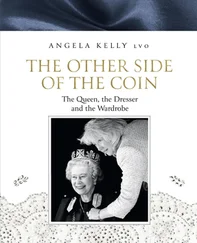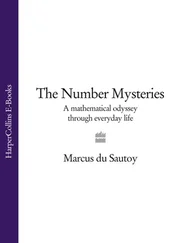Fermat’s numbers were very dear to Gauss’s heart. The fact that 17 is one of Fermat’s primes is the key to why Gauss could construct his perfect 17-sided shape. In his great treatise Disquisitiones Arithmeticae , Gauss shows why it is that, if the N th Fermat number is a prime, you can make a geometric construction of an N -sided shape only using a straight edge and compass. The fourth Fermat number, 65,537, is prime, so with these very basic instruments it is possible to construct a perfect 65,537-sided figure.
Fermat’s numbers have failed to throw up more than four primes to date, but he had more success in uncovering some of the very special properties that prime numbers have. Fermat discovered a curious fact about those prime numbers that leave remainder 1 on division by 4 – examples are 5, 13, 17 and 29. Such prime numbers can always be written as the sum of two squares – for example, 29 = 2 2+ 5 2. This was another of Fermat’s teases. Although he claimed to have a proof, he failed to record much of the details.
On Christmas Day, 1640, Fermat wrote of his discovery – that certain primes could be expressed as the sum of two squares – in a letter to a French monk called Marin Mersenne. Mersenne’s interests were not confined to liturgical matters. He loved music and was the first to develop a coherent theory of harmonics. He also loved numbers. Mersenne and Fermat corresponded regularly about their mathematical discoveries, and Mersenne broadcast many of Fermat’s claims to a wider audience. Mersenne became renowned for his role as an international scientific clearing house through which mathematicians could disseminate their ideas.
Just as generations had been captivated by the search for order in the primes, Mersenne too had caught the bug. Although he couldn’t see a way to find a formula that would produce all the primes, he did come across a formula that in the long run has proved far more successful at finding primes than Fermat’s formula has. Like Fermat, he started by considering powers of 2. But instead of adding 1, as Fermat had, Mersenne decided to subtract 1 from the answer. So, for example, 2 3− 1 = 8 − 1 = 7, a prime number. Maybe Mersenne’s musical intuition was coming to his aid. Doubling the frequency of a note takes the note up an octave, so powers of 2 produce harmonic notes. You might expect a shift of 1 to sound a very dissonant note, not compatible with any previous frequency – a ‘prime note’.
Mersenne quickly discovered that his formula wasn’t going to yield a prime every time. For example, 2 4− 1 = 15. Mersenne realised that if n was not prime then there was no chance that 2 n − 1 was going to be prime. But now he boldly claimed that, for n up to 257, 2 n − 1 would be prime precisely if n was one of the following numbers: 2, 3, 5, 7, 13, 19, 31, 67, 127, 257. He had discovered that even if n was prime, it still annoyingly didn’t guarantee that his number 2 n − 1 would be prime. He could calculate 2 11− 1 by hand and get 2,047, which is 23 × 89. Generations of mathematicians marvelled at Mersenne’s ability to assert that a number as large as 2 257− 1 was prime. This number has 77 digits. Did the monk have access to some mystical arithmetic formula that told him why this number, beyond any human computational abilities, was prime?
Mathematicians believe that if one continues Mersenne’s list, there will be infinitely many choices for n which will make Mersenne’s numbers 2 n − 1 into prime numbers. But we are still missing a proof that this guess is true. We are still waiting for a modern day Euclid to prove that Mersenne’s primes never run dry. Or perhaps this far-off peak is just a mathematical mirage.
Many mathematicians of Fermat and Mersenne’s generation had played around with interesting numerological properties of the primes, but their methods did not match up to the ancient Greek ideal of proof. This explains in part why Fermat gave no details of many of the proofs he claimed to have discovered. There was a distinct lack of interest during this period in providing such logical explanations. Mathematicians were quite content with a more experimental approach to their subject, where in an increasingly mechanised world results were justified by their practical applications. In the eighteenth century, however, there arrived a mathematician who would rekindle a sense of the value of proof in mathematics. The Swiss mathematician Leonhard Euler, born in 1707, came up with explanations for many of the patterns that Fermat and Mersenne had discovered but failed to account for. Euler’s methods would later play a significant role in opening new theoretical windows onto our understanding of the primes.
Euler, the mathematical eagle
The mid-eighteenth century was a time of court patronage. This was pre-Revolutionary Europe, when countries were ruled by enlightened despots: Frederick the Great in Berlin, Peter the Great and Catherine the Great in St Petersburg, Louis XV and Louis XVI in Paris. Their patronage supported the academies that drove the intellectual development of the Enlightenment, and indeed they saw it as a mark of their standing that they be surrounded in their courts by intellectuals. And they were well aware of the potential of the sciences and mathematics to boost the military and industrial capabilities of their countries.
Euler was the son of a clergyman who hoped that his son would join him in the church. The young Euler’s precocious mathematical talents, however, had brought him to the notice of the powers that be. Euler was soon being courted by the academies throughout Europe. He had been tempted to join the Academy in Paris, which by this time had become the world’s centre of mathematical activity. He chose instead to accept an offer made to him in 1726 to join the Academy of Sciences in St Petersburg, the capstone for Peter the Great’s campaign to improve education in Russia. He would be joining friends from Basel who had stimulated his interest in mathematics as a child. They wrote to Euler from St Petersburg asking whether he could bring from Switzerland fifteen pounds of coffee, one pound of the best green tea, six bottles of brandy, twelve dozen fine tobacco pipes and a few dozen packs of playing cards. Laden down with gifts, it took the young Euler seven weeks to complete the long journey by boat, on foot and by post wagon, and in May 1727 he finally arrived in St Petersburg to pursue his mathematical dreams. His subsequent output was so extensive that the St Petersburg Academy was still publishing material that had been housed in their archives some fifty years after Euler’s death in 1783.
The role of the court mathematician is perfectly illustrated by a story that was told of Euler’s time in St Petersburg. Catherine the Great was hosting the famous French philosopher and atheist Denis Diderot. Diderot was always rather damning of mathematics, declaring that it added nothing to experience and served only to draw a veil between human beings and nature. Catherine, though, quickly tired of her guest, not because of Diderot’s disparaging views on mathematics but rather his tiresome attempts to rattle the religious faith of her courtiers. Euler was promptly called to court to assist in silencing the insufferable atheist. In appreciation of her patronage, Euler duly consented and addressed Diderot in serious tones before the assembled court: ‘Sir, ( a + b n )/ n = x , hence God exists; reply.’ Diderot is reported to have retreated in the light of such a mathematical onslaught.
This anecdote, told by the famous English mathematician Augustus De Morgan in 1872, had probably been embroidered for popular consumption and is a reflection more of the fact that most mathematicians enjoy putting down philosophers. But it does show how the royal courts of Europe had not considered themselves complete without a smattering of mathematicians amongst the ranks of astronomers, artists and composers.
Читать дальше












